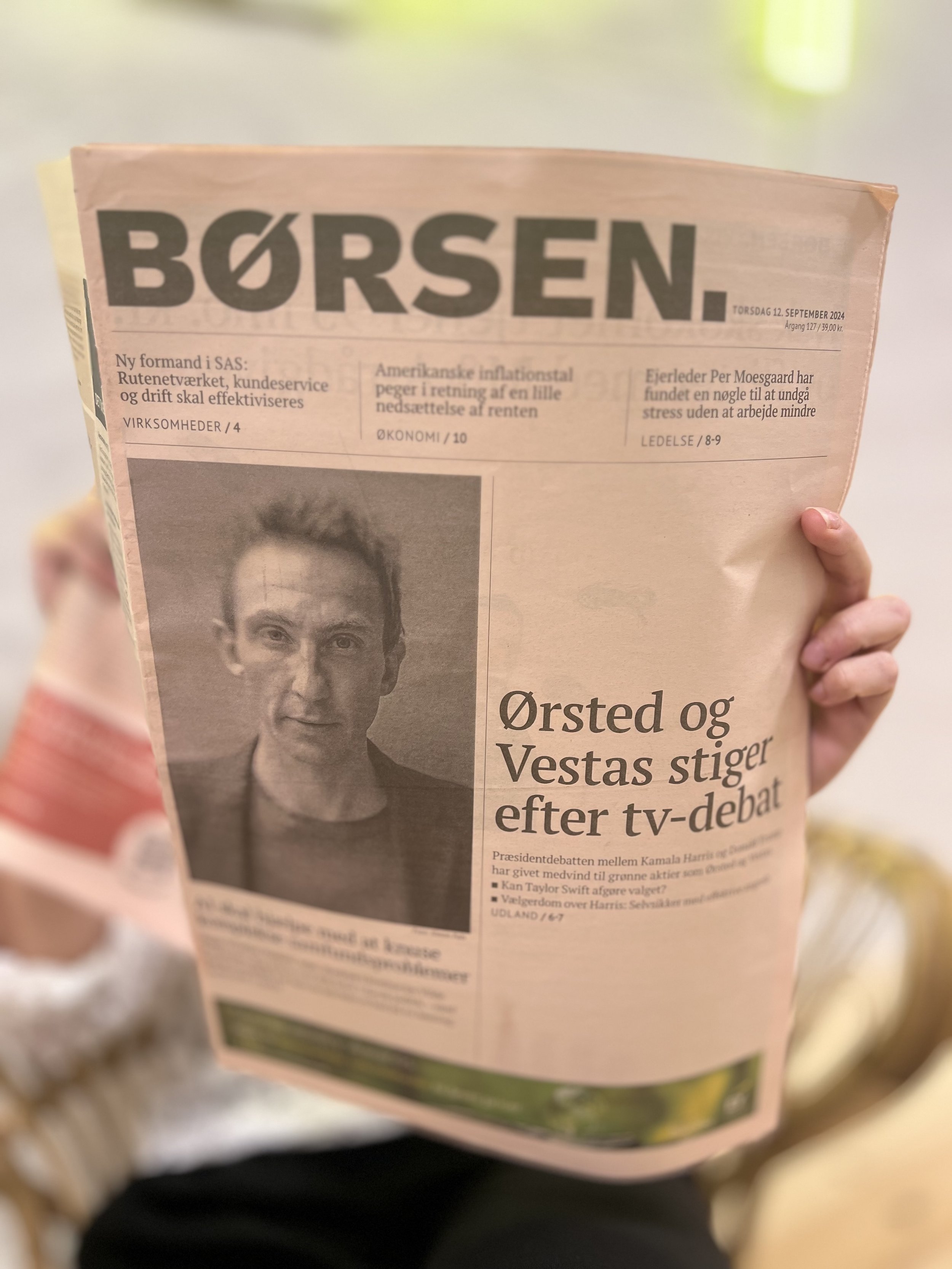
Model for Wicked Problems
Here you get the PIXI on INVI's wicked Problems Model. It provides a short and clearer introduction to INVI's Model for wicked Problems.
Are you interested in collaborating on the model either in a research context or with a specific project?
Write to model@invi.nu
Follow-up group for Model for wicked Problems
-
Carl-Johan Dalgaard
Chairman of the Economic Council
Professor, Department of Economics, University of Copenhagen -

Nina Smith
Professor, Department of Economics, Aarhus University
-

Peter Stensgaard Mørch
Managing Director, PensionDanmark
-

Kira West
Director, Home for All Alliance
-

Maj Baltzarsen
Partner, Analysis & Numbers
-

Michael Bang Petersen
Professor, Department of Political Science, Aarhus University
Chairman of the power investigation -

Anders Kristian Munk
Professor, Department of Technology, DTU
Media coverage of Model for Wicked Problems
PIXI
INVI's guide to the model
In this PIXI, we've boiled down the most important information about the model so you can get a quick overview.
You'll get the main features of the model, answers to how the model can help us tackle wicked problems and what both challenges and potentials there are at the intersection of AI and wicked problems.
Experience INVI's hearing in the Danish Parliament on
'Model for Wicked Problems'
Søs Marie Serup moderated discussions.
She asked a minister, a senior advisor, a homelessness director, a statistician and a former head of department how they think the Model for Wicked Problems can equip us to deal with wicked problems - and what the limitations of the model are.
Here you can watch or re-watch the hearing bit by bit.
Q&A about 'Model for Wicked Problems'
There are many good questions to ask when measuring wicked problems. We've collected our answers to the most obvious ones.
Maybe you can find the answer to your question here?
-
We've gone from 8.5 million words in legislation in 1989 to 35.2 million words in legislation in 2024. All the while, societal problems have become more intertwined. We formulate lots of policy, but change often fails to happen.
A survey we conducted shows that only 14% of Danes believe that all policies that are adopted can actually be implemented. This trend is also confirmed by many people behind the walls of power.
And more and more practitioners implementing legislation are tired of quick reforms and quick fixes - and their motivation, research shows, is crucial to whether legislation gets out there and lives.
Increasing complexity, wicked problems and lack of motivation call for help to reduce complexity, make inroads and practitioners regain their motivation.
It is based on insights from research, survey data, reports, experiences and needs that INVI introduces our Model for wicked Problems.
A model that tries to help government navigate complexity. A model that wants to bind decision-makers and voters closer together in the implementation of policy.
-
The wicked Problems model relies on AI and statistical tools that capture assessments from all the practitioners on the front lines of implementation trying to tackle wicked problems.
The experience of practitioners gives the model a grasp of complex problems that are diffuse and elusive and gives them a clear expression that everyone can relate to.
It does this using text-as-data methods, taking qualitative impressions and translating them into quantitative expressions.
The model can therefore be used in many different ways - the only limit is your imagination.
We use a maritime image to illustrate the four most obvious applications of the model:
Sea of Knowledge
Provide access to the previously uncharted waters, i.e. the experiences and insights from practitioners about what it is like to make policy between people and reality. The model can capture these insights on an ongoing basis and therefore provide a more dynamic decision-making basis to tackle wicked problems.
Compass
The model has four corners of the world to navigate the complexity of the problem and can therefore outline the problem along the following dimensions: causes, solutions, scale and conflict. With the compass, we can also see how the problem differs from others and give it a value from 0 (tame) to 100 (wild) which indicates its level of complexity - that is, how wild the problem is.
Navigation
With a wealth of knowledge from practitioners and a compass to steer by, it's now easier to navigate through complexity - from start to finish in a decision-making process.
There are many options for navigation, here are four obvious ones:
Development phase: Generate unique insights among those who have to deal with the wicked problems in practice - who thinks what and how do they view the specifics of the problem: Here, differences and similarities can leach out that may surprise us in our understanding of the problem. In other words, we become wiser about both the problem itself and the people surrounding it.
Policy formulation phase: Identifying hypotheses that can be tested. Here we can get an overview of which solutions are actually swimming around in reality - right now. We become wiser by seeing how many hypothesized solutions there are to, for example, youth unhappiness. We often only talk about a few possible solutions, especially screen-free schools, but the model shows that there are many more. We can also uncover how much support there is for each of the solutions - and whether there are any types of solutions that we have previously overlooked.
Implementation phase: Bringing together key players and alliances needed to implement the chosen types of solutions. Today, it can be difficult to determine which actors should be on board in the implementation. Often we end up with "Thunderbolt soldiers". The wicked problems model ensures that we have an overview of the majority of the players - and can identify whether there are crucial players who are a brake or an engine that can worsen or strengthen the implementation. And which decision makers therefore need to address.
Feedback phase: The model creates continuous 'loops' from the front, making it possible to closely follow the implementation of initiatives. In this way, we learn more along the way and uncover whether there is a need to adapt. The model provides a continuous picture of how practitioners - who are implementing (legislative) changes in schools, nursing homes, hospitals, companies or somewhere else - change their understanding and actions over time. Today, decision makers often have to wait years for an impact measurement or evaluation to deliver a verdict. The wicked problems model does not replace existing knowledge and research, but is a dynamic supplement.
Atlas
Over time, as the model becomes sharper, it is possible to match specific types of wicked problems with specific types of policy tools: Does the climate crisis need climate partnerships? Does the well-being crisis need a well-being commission? And do employment efforts need tax reform? With an Atlas, we can get closer to recommending a path through complexity.
-
The short answer is: No.
The famous British statistician George E. P. Box has freely translated the following:
"All models are wrong, but some of them are useful."
Of course, this is also the case for the wicked Problem Model. It will never be able to accurately uncover the complexity of a problem and indicate the exact course to solve it. Nevertheless, it is clear already in the model's test phase that the dialogue with potential users of the model in ministries, municipalities and organizations sees it as very useful.
However, we hear the following four questions when people meet the model for the first time. Here are the answers to them:
1) How can the model be smarter than subject matter experts
The model is far from smarter than experts - or practitioners for that matter. But it gathers existing knowledge and does so on an ongoing basis, providing a fresh picture from the frontline. Subject matter experts can then use the model as a tool, just as a doctor can get model data on what surgeries or interventions people closest to the problem consider relevant when faced with a complicated disease picture. The model for wicked problems is thus initially descriptive, but can become prescriptive over time.
2) What's wrong with the knowledge that already exists?
There is nothing wrong with the existing knowledge. Quite the contrary. Rather, the model provides a supplement, which will often be more dynamic than the data sources from which decisions are usually made, such as reports, research or evaluations. The wicked problems model is thus strongest at providing 'snap-shots' of what is happening right now in the implementation, while research and evaluation can play the whole 'movie' by documenting what effects actually came out of the interventions.
3) How do you ensure quality data
Respondents are selected in close collaboration with the client and subject matter experts. Let's look at an example. If the topic is childhood obesity, the relevant respondents could be an 'implementation community' consisting of school teachers, educators, doctors, civil society or municipal officials. One could argue that data quality is compromised - after all, won't these people only answer based on their own narrow interests? In our experience, when you ask professionals in the field about a professional question, they mostly answer based on their professionalism. And not based on what they think ideologically or what their union might say. Respondents answer - as we can assess based on several test runs - based on their experience with the problem. Right now, right here. That said, we are constantly looking to improve data and remove noise in data. That exercise never stops.
4) Can we make decisions based on AI?
In short, the fact that the model is AI-based means that it is able to collect large amounts of data and process it in new ways. In this case, data often comes from practitioners close to a problem. For example, when we use AI, there are no humans writing out interviews and content codes. Instead, we've created a model with a code that is sharp at seeing connections between practitioners' statements and then pooling these statements into knowledge clusters and seeing how they change over time. The model is constantly improving, but it already sees patterns across the board that in many cases would probably take a long time for subject matter experts to scrape out.
It is crucial to clarify that the model does not make decisions. Instead, it describes situations. And over time, it will suggest - in an Atlas - which collaborations, organizational forms or tools are deemed useful based on research and practical experience. Thus, for example, the model does not suggest whether taxes should be raised or lowered. In this light, it is up to politicians, experts and organizational people to act on the insights that the model provides.
-
The model will continue to evolve as it goes through more runs and AI-driven processes. But it's already clear that there is a lot of potential on the horizon.
Citizens are of course central to further development. Right now the model focuses on the practitioners, but what about the users who often need to change behavior or gain benefits from new initiatives? In the next evolution of the wicked Problems Model, we will also 'feed' the model with the ongoing experience of users.
Decision-makers are also vital for the model to be used. There is potential in linking the model even more closely to the implementation of legislation to follow developments closely and adjust course in the face of the complexity of reality. For example, you could 'feed' the model with existing research, expert knowledge or legislation. This will make the model even more robust if it is to act as an ongoing sparring partner for decision-makers.
Overall, the possibilities are manifold. The important thing is that we are critical about which data sources are used. Not all sources are of high enough quality or independent enough to inform decisions.
INVIs MASTERCLASSES
Learn how to navigate INVI's Model for Wicked Problems
Do you want to take on plans and policies that don't happen? Then become a policy entrepreneur at INVI's masterclass! And be taught INVI's Model for Wicked Problems and the skills to apply it.
INVI is currently offering two masterclasses
One for policy entrepreneurs and one for senior executives - both with a strong team of trainers.
Read more about them here:

Want to join us?
Apply to join INVI's Policy Insights Panel:
Want to be among the first to know what INVI does?
Then follow us on LinkedIn




